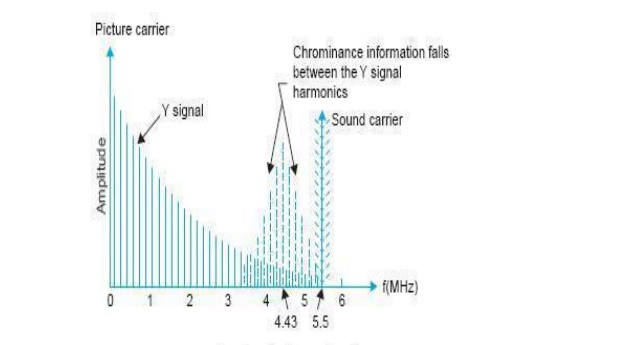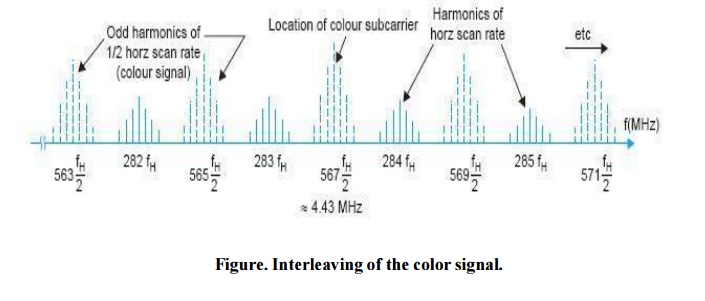Chapter: Television and Video Engineering : Essentials of Color Television
Color Signal Transmission
COLOR SIGNAL TRANSMISSION
The color
video signal contains two independent information, that of hue and saturation.
It is a difficult matter to modulate them to one and the same carrier in such a
way that these can be easily recovered at the receiver without affecting each
other.
The
problem is accentuated by the need to fit this color signal into a standard TV
channel which is almost fully occupied by the ‘Y’ signal. However, to satisfy
compatibility requirements the problem has been ingeniously solved by combining
the color information into a single variable and by employing what is known as
frequency interleaving.
(In the
CCIR PAL I standards the picture and sound carrier are 6 MHz apart and the
channel bandwidth is 8 MHz. The only difference between PAL-B and PAL-G is in
the channel bandwidth)
PAL-B
with channel bandwidth of 7 MHz does not provide any inter-channel gap, whereas
PAL-G with channel bandwidth of 8 MHz provides a band gap of 1 MHz in-between
successive channels.


Related Topics